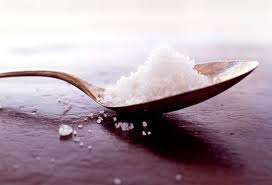Gout Increasing in Women, Soda Partly to Blame
 Thursday, November 11, 2010 at 9:57AM
Thursday, November 11, 2010 at 9:57AM Most people assume gout is a medieval ailment of men in tights drinking grog, but it turns out the painful condition, characterized by attacks of acute inflammatory arthritis (usually in the metatarsal-phalangeal joint at the base of the big toe) is a growing problem in the 21st Century. This past week, researchers at the American College of Rheumatology annual meeting (a barnburner if there ever was one) report gout now afflicts some 31% of U.S. adults 65 and older--that's an estimated 8.4 million people limping about like Henry the VIII. Most curiously, the incidence of gout is increasing in women.![]() Sprite is more than 60% high fructose corn syrup.
Sprite is more than 60% high fructose corn syrup.
Food and alcohol have long been known as a major triggers. Gout (technical name, hyperuricemia) develops when the blood becomes saturated with uric acid, a breakdown product of purines, which are a constituent of many foods including red and organ meats. When uric acid spreads through the bloodstream into the joints, it crystallizes and intense pain develops, which tends to be worse in the extremities where body temperature is lower. The condition is more than just a painful nuisance, it's also associated with heart disease and kidney stones.
A couple of years ago, pre-eminent gout researcher Hyon Choi of Boston University School of Medicine established high-fructose corn syrup as a new gout trigger. Fructose independently triggers the body’s production of uric acid from adenosine triphosphate, a molecule that stores and transports energy.
Now, Choi and the eminent Walter Willett of Harvard have identified (and published in the Journal of the American Medical Association) a more precise explanation as to why women are getting gout more often. Based on data collected from roughly 79,000 postmenopausal participants of the long-running Nurse’s Health Study, the team shows that downing one sugar-sweetened soft drink per day increased a woman’s risk of gout compared to women drinking less than one serving a month. Upping the consumption of sugary soft drinks to two or more servings a day appeared to have an even bigger effect.
Women are mostly protected from gout until menopause (that's another thing to add to the list) because female sex hormones help keep uric acid levels low. But after menopause, women’s risk of the disease rises to about half of the rate in older U.S. men, Choi reports.
In the U.S. the FDA has just approved a patent for a gout treatment, colchicine, that's been around since the Germans invented it in 1826, a move that has driven the price up from pennies to over $3 a pill. (Canada anyone?)
Of course, the age-old approach of foregoing alcohol, red meat and now soda still works.
 Kathy |
Kathy |  Post a Comment |
Post a Comment |  gout,
gout,  soda,
soda,  walter willett
walter willett 
